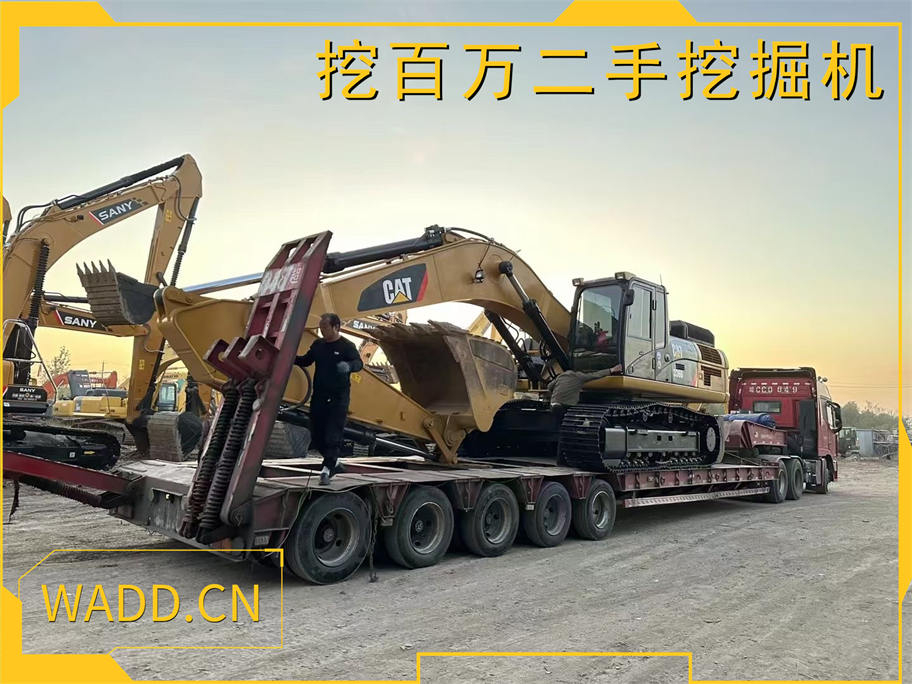咨詢熱線
趙總15190193096
中國是全球最大的工程機(jī)械設(shè)備生產(chǎn)和出口國之一,二手設(shè)備市場也在不斷擴(kuò)大。將二手工程機(jī)械設(shè)備出口到國際市場可以為賣家?guī)砀嗟纳虣C(jī)和利潤。上海挖百萬二手挖掘機(jī)(www.yvpkn.cn)致力于為客戶提供高質(zhì)量的二手設(shè)備并確保順利出口。本文將詳細(xì)介紹中國二手工程機(jī)械設(shè)備出口的步驟和注意事項(xiàng),幫助您順利完成國際交易。
China is one of the largest producers and exporters of construction machinery in the world, and the market for used equipment is also expanding. Exporting used construction machinery to international markets can bring more opportunities and profits for sellers. Shanghai Wabaiwan Used Excavators (www.yvpkn.cn) is dedicated to providing high-quality used equipment and ensuring smooth exports. This article will detail the steps and considerations for exporting used construction machinery from China, helping you successfully complete international transactions.
1. 設(shè)備評估和維護(hù)(Equipment Evaluation and Maintenance)
對設(shè)備進(jìn)行全面檢查和評估,確保其處于良好狀態(tài)。
進(jìn)行必要的維護(hù)和保養(yǎng),提升設(shè)備的市場價值。
Conduct a thorough inspection and evaluation of the equipment to ensure it is in good condition. Perform necessary maintenance to enhance the market value of the equipment.
2. 市場研究(Market Research)
了解目標(biāo)市場的需求和偏好,確定合適的銷售國家。
研究各國的進(jìn)口規(guī)定和稅收政策,確保符合相關(guān)法規(guī)。
Understand the demand and preferences of the target market to determine suitable countries for sale. Research the import regulations and tax policies of different countries to ensure compliance with relevant laws.
3. 準(zhǔn)備必要文件(Preparing Necessary Documents)
商業(yè)發(fā)票、裝箱單、原產(chǎn)地證書等出口所需文件。
符合性證書(CoC),確保設(shè)備符合進(jìn)口國的標(biāo)準(zhǔn)。
Prepare necessary export documents such as commercial invoices, packing lists, certificates of origin, and a certificate of conformity (CoC) to ensure the equipment meets the import standards of the destination country.
1. 使用在線平臺(Using Online Platforms)
在知名的國際二手機(jī)械設(shè)備交易平臺上發(fā)布設(shè)備信息,如MachineryTrader、IronPlanet等。
在平臺上提供詳細(xì)的設(shè)備描述、照片和價格信息,吸引潛在買家。
List the equipment on well-known international used machinery trading platforms such as MachineryTrader and IronPlanet. Provide detailed equipment descriptions, photos, and pricing information to attract potential buyers.
2. 參加國際展會(Attending International Trade Shows)
參加行業(yè)內(nèi)的國際展會,與來自世界各地的潛在買家面對面交流。
展示設(shè)備并提供現(xiàn)場演示,增加設(shè)備的吸引力。
Attend international trade shows within the industry to interact with potential buyers from around the world. Showcase the equipment and provide on-site demonstrations to increase its appeal.
3. 建立國際代理(Establishing International Agents)
與當(dāng)?shù)氐匿N售代理合作,利用他們的網(wǎng)絡(luò)和資源推廣設(shè)備。
提供必要的培訓(xùn)和支持,確保代理能夠有效地銷售設(shè)備。
Collaborate with local sales agents to leverage their networks and resources to promote the equipment. Provide necessary training and support to ensure the agents can effectively sell the equipment.
1. 選擇合適的運(yùn)輸方式(Choosing the Right Shipping Method)
根據(jù)設(shè)備的大小和重量,選擇合適的運(yùn)輸方式,如集裝箱運(yùn)輸或滾裝船(RORO)。
確保運(yùn)輸公司具備處理大型機(jī)械設(shè)備的經(jīng)驗(yàn)。
Choose the appropriate shipping method based on the size and weight of the equipment, such as container shipping or Roll-on/Roll-off (RORO) ships. Ensure the shipping company has experience handling large machinery.
2. 拆卸和包裝(Dismantling and Packaging)
根據(jù)需要拆卸設(shè)備的部分部件,以便于運(yùn)輸。
使用專業(yè)的包裝材料和方法,確保設(shè)備在運(yùn)輸過程中不會受到損壞。
Dismantle parts of the equipment if necessary for easier transportation. Use professional packaging materials and methods to ensure the equipment is not damaged during transit.
3. 辦理海關(guān)手續(xù)(Handling Customs Procedures)
提前向出口國和進(jìn)口國的海關(guān)申報設(shè)備,提交所有必要文件。
支付相關(guān)的關(guān)稅和增值稅(VAT),稅率根據(jù)設(shè)備類型和價值而定。
Declare the equipment to the customs of both the exporting and importing countries in advance and submit all necessary documents. Pay the relevant customs duties and value-added tax (VAT), with rates depending on the type and value of the equipment.
4. 運(yùn)輸保險(Transportation Insurance)
為設(shè)備購買運(yùn)輸保險,覆蓋在運(yùn)輸過程中可能發(fā)生的損壞或丟失。
保險可以提供額外的保障,減少運(yùn)輸風(fēng)險。
Purchase transportation insurance for the equipment to cover any potential damage or loss during transit. Insurance provides additional protection and reduces transportation risks.
1. 卸載與檢查(Unloading and Inspection)
在設(shè)備到達(dá)目的地后,小心卸載并進(jìn)行詳細(xì)檢查,確保沒有損壞。
檢查設(shè)備的所有部件,確保其功能正常。
Carefully unload the equipment upon arrival at the destination and conduct a detailed inspection to ensure no damage has occurred. Check all parts of the equipment to ensure they function properly.
2. 組裝與調(diào)試(Assembly and Commissioning)
根據(jù)需要重新組裝拆卸的部件。
進(jìn)行必要的調(diào)試和測試,確保設(shè)備可以正常運(yùn)行。
Reassemble any dismantled parts as needed. Conduct necessary commissioning and testing to ensure the equipment operates correctly.
3. 提供售后支持(Providing After-Sales Support)
提供設(shè)備的維修和保養(yǎng)服務(wù),確保客戶滿意。
建立長期合作關(guān)系,增加未來銷售機(jī)會。
Provide repair and maintenance services for the equipment to ensure customer satisfaction. Establish long-term relationships to increase future sales opportunities.
成功將二手工程機(jī)械設(shè)備出口到國際市場需要全面的準(zhǔn)備和專業(yè)的操作。從設(shè)備評估、市場研究到出口流程,每一步都至關(guān)重要。上海挖百萬二手挖掘機(jī)(www.yvpkn.cn)擁有豐富的國際出口經(jīng)驗(yàn),能夠?yàn)槟峁┤娴姆?wù),確保您的設(shè)備順利出口。如果您有任何問題或需求,歡迎隨時聯(lián)系我們。
Successfully exporting used construction machinery to international markets requires thorough preparation and professional handling. From equipment evaluation and market research to the export process, each step is crucial. Shanghai Wabaiwan Used Excavators (www.yvpkn.cn) has extensive experience in international exports and can provide comprehensive services to ensure your equipment is successfully exported. If you have any questions or needs, please feel free to contact us.
管理員
該內(nèi)容暫無評論